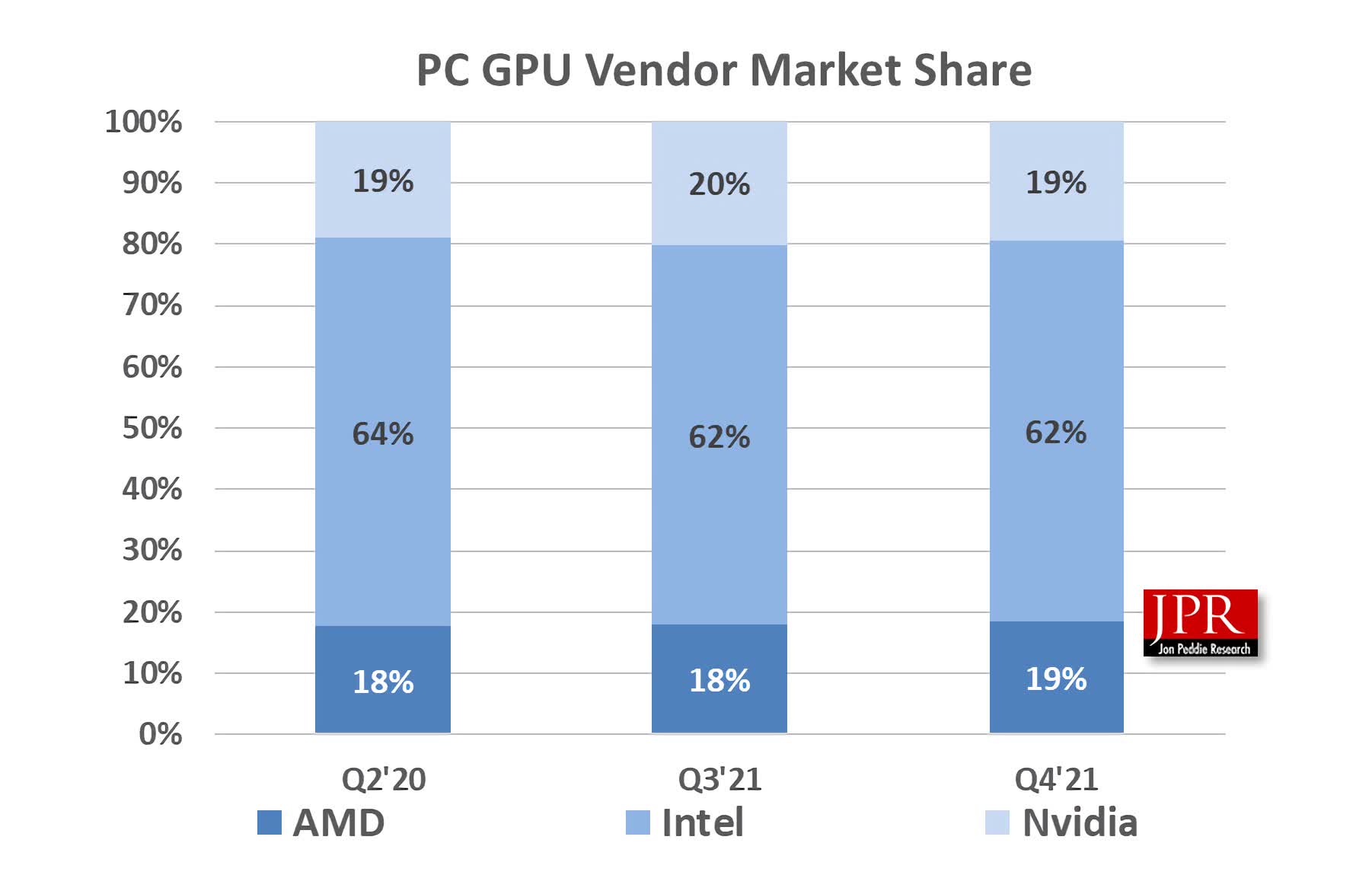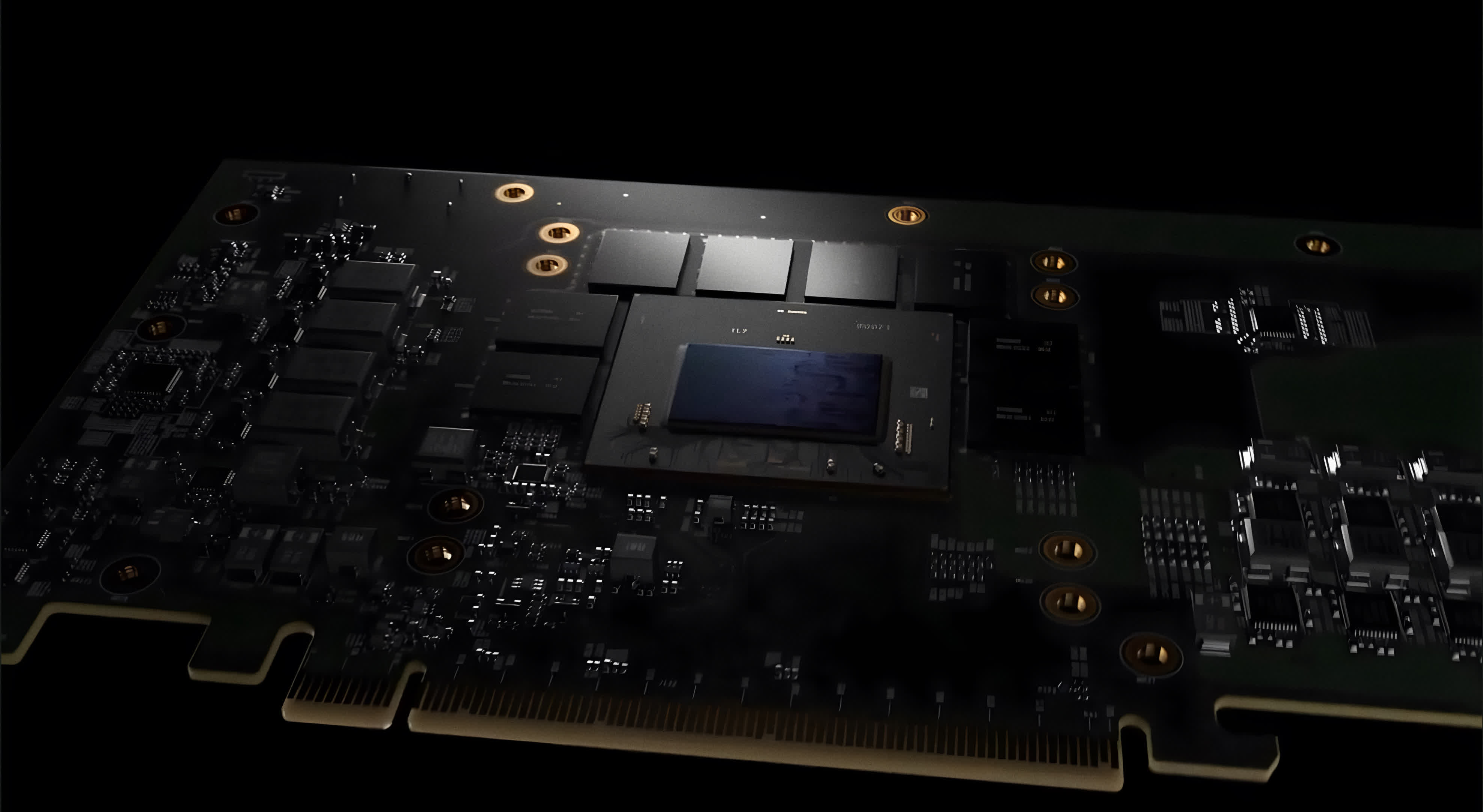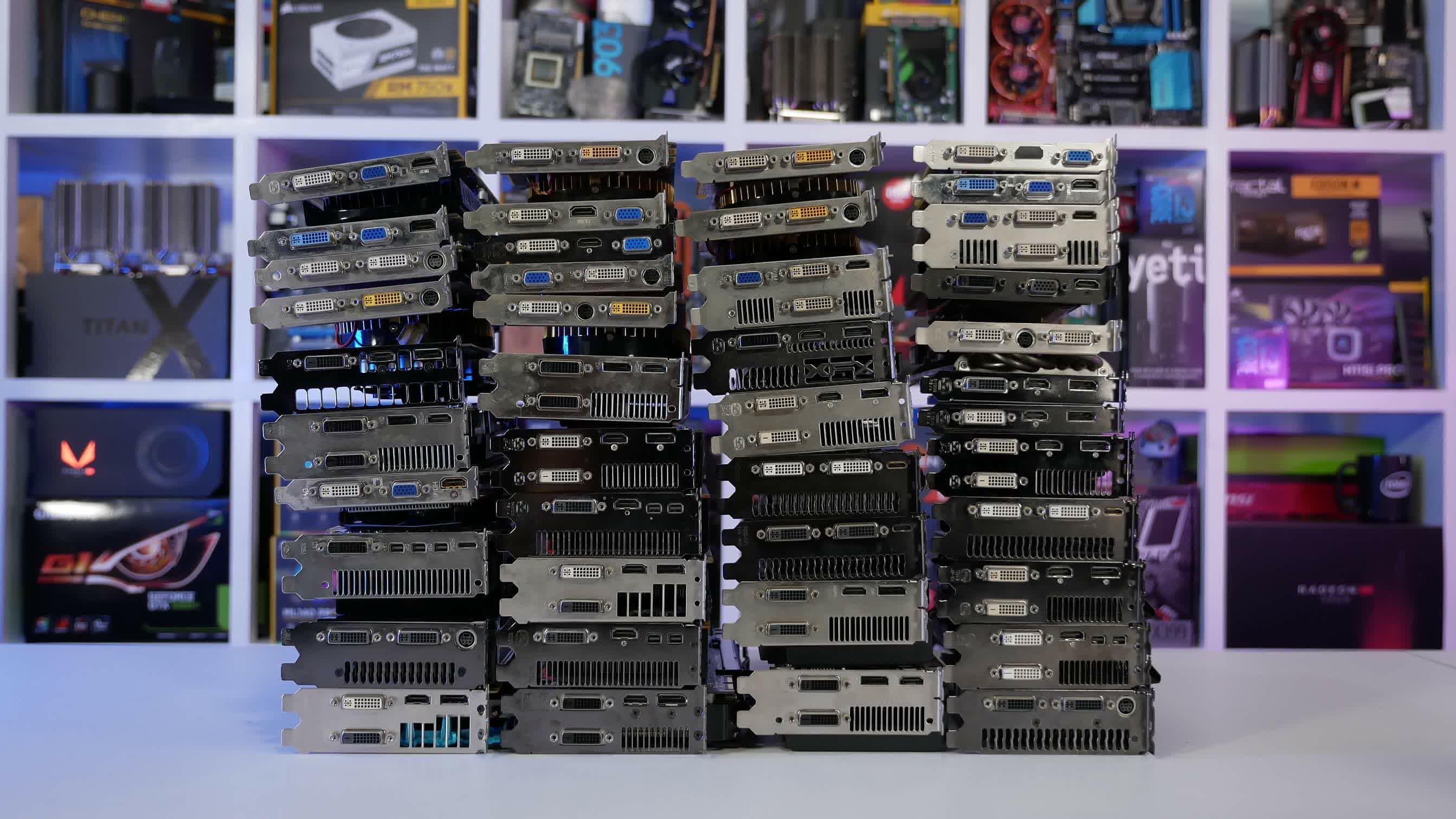Why it matters: The GPU market appears to be growing again, mostly thanks to a recovering supply chain and a decrease in cryptocurrency mining profitability. Sales of desktop graphics cards increased towards the end of 2021, but we'll have to wait and see if this trend will continue throughout this year. If anything, Intel's entry into the discrete GPU market might spice things up with more options.
It's not exactly the best time to go hunting for the best new or used graphics cards, but things appear to be slowly improving. Prices are nowhere close to MSRP, but they are the lowest we've seen in a year. Availability has also improved, mainly due to a decrease in cryptocurrency mining profitability.
Another potential reason for this positive development is that the supply chain is gradually recovering from the pandemic-induced factory shutdowns, the energy crunch in China, and a shortage of chips and other components caused by a combination of unrelenting demand and manufacturers building stockpiles for future use.

According to a report from Jon Peddie Research (JPR), AIBs shipped a total of around 101 million discrete and integrated GPUs for PCs in Q4 2021. This is only a small 0.8 percent increase over the previous quarter, but JPR analysts expect this market to have an annual growth rate of 4.5 percent through 2025 as supply catches up with demand.
Sales of CPUs with integrated graphics were down 21 percent year-over-year, and Intel still dominates the overall market in terms of GPU units sold. Team Blue is flooding the market with 12th generation Alder Lake CPUs with Xe integrated graphics while AMD is readying Zen 3+ and Zen 4 CPUs with RDNA 2 integrated graphics; it'll be interesting to see how they shape the market in the coming months.
When it comes to graphics cards for desktop PCs, JPR says the industry shipped around 13 million units in the three months ending in December 2021, which represents an 18 percent year-over-year growth. AMD's market share rose from 17 percent to 19 percent, mostly at the expense of Nvidia who lost two percentage points.

Intel is getting ready to release its Arc Alchemist discrete GPUs, but it probably won't have a huge impact on the overall GPU market. Team Blue plans to ship no less than four million Arc GPUs to consumers this year, but CEO Pat Gelsinger doesn't think the chip shortage will end until 2023 at the earliest.
Whether or not Intel will become a strong third player in the discrete GPU market is no longer a question of if, but when. Intel wants to eventually have enough manufacturing capacity to produce its own GPUs, but right now it depends on TSMC - just like AMD and, soon enough, Nvidia. And that's a problem, as Taiwan is running out of skilled workers for its fast-growing semiconductor industry.
